I am having trouble with an app with an OpenGL component crashing on iPad. The app throws a memory warning and crashes, but it doesn't appear to be using that much memory. Am I missing something?
The app is based on the Vuforia augmented reality system (borrows heavily from the ImageTargets sample). I have about 40 different models I need to include in my app, so in the interests of memory conservation I am loading the objects (and rendering textures etc) dynamically in the app as I need them. I tried to copy the UIScrollView lazy loading idea. The three 4mb allocations are the textures I have loaded into memory ready for when the user selects a different model to display.
Anything odd in here?

I don't know much at all about OpenGL (part of the reason why I chose the Vurforia engine). Anything in this screen shot below that should concern me? Note that Vurforia's ImageTagets sample app also has Uninitialized Texture Data (about one per frame), so I don't think this is the problem.

Any help would be appreciated!!
Here is the code that generates the 3D objects (in EAGLView):
// Load the textures for use by OpenGL
-(void)loadATexture:(int)texNumber {
if (texNumber >= 0 && texNumber < [tempTextureList count]) {
currentlyChangingTextures = YES;
[textureList removeAllObjects];
[textureList addObject:[tempTextureList objectAtIndex:texNumber]];
Texture *tex = [[Texture alloc] init];
NSString *file = [textureList objectAtIndex:0];
[tex loadImage:file];
[textures replaceObjectAtIndex:texNumber withObject:tex];
[tex release];
// Remove all old textures outside of the one we're interested in and the two on either side of the picker.
for (int i = 0; i < [textures count]; ++i) {
if (i < targetIndex - 1 || i > targetIndex + 1) {
[textures replaceObjectAtIndex:i withObject:@""];
}
}
// Render - Generate the OpenGL texture objects
GLuint nID;
Texture *texture = [textures objectAtIndex:texNumber];
glGenTextures(1, &nID);
[texture setTextureID: nID];
glBindTexture(GL_TEXTURE_2D, nID);
glTexParameterf(GL_TEXTURE_2D, GL_TEXTURE_MIN_FILTER, GL_LINEAR);
glTexParameterf(GL_TEXTURE_2D, GL_TEXTURE_MAG_FILTER, GL_LINEAR);
glTexImage2D(GL_TEXTURE_2D, 0, GL_RGBA, [texture width], [texture height], 0, GL_RGBA, GL_UNSIGNED_BYTE, (GLvoid*)[texture pngData]);
// Set up objects using the above textures.
Object3D *obj3D = [[Object3D alloc] init];
obj3D.numVertices = rugNumVerts;
obj3D.vertices = rugVerts;
obj3D.normals = rugNormals;
obj3D.texCoords = rugTexCoords;
obj3D.texture = [textures objectAtIndex:texNumber];
[objects3D replaceObjectAtIndex:texNumber withObject:obj3D];
[obj3D release];
// Remove all objects except the one currently visible and the ones on either side of the picker.
for (int i = 0; i < [tempTextureList count]; ++i) {
if (i < targetIndex - 1 || i > targetIndex + 1) {
Object3D *obj3D = [[Object3D alloc] init];
[objects3D replaceObjectAtIndex:i withObject:obj3D];
[obj3D release];
}
}
if (QCAR::GL_20 & qUtils.QCARFlags) {
[self initShaders];
}
currentlyChangingTextures = NO;
}
}
Here is the code in the textures object.
- (id)init
{
self = [super init];
pngData = NULL;
return self;
}
- (BOOL)loadImage:(NSString*)filename
{
BOOL ret = NO;
// Build the full path of the image file
NSString* resourcePath = [[NSBundle mainBundle] resourcePath];
NSString* fullPath = [resourcePath stringByAppendingPathComponent:filename];
// Create a UIImage with the contents of the file
UIImage* uiImage = [UIImage imageWithContentsOfFile:fullPath];
if (uiImage) {
// Get the inner CGImage from the UIImage wrapper
CGImageRef cgImage = uiImage.CGImage;
// Get the image size
width = CGImageGetWidth(cgImage);
height = CGImageGetHeight(cgImage);
// Record the number of channels
channels = CGImageGetBitsPerPixel(cgImage)/CGImageGetBitsPerComponent(cgImage);
// Generate a CFData object from the CGImage object (a CFData object represents an area of memory)
CFDataRef imageData = CGDataProviderCopyData(CGImageGetDataProvider(cgImage));
// Copy the image data for use by Open GL
ret = [self copyImageDataForOpenGL: imageData];
CFRelease(imageData);
}
return ret;
}
- (void)dealloc
{
if (pngData) {
delete[] pngData;
}
[super dealloc];
}
@end
@implementation Texture (TexturePrivateMethods)
- (BOOL)copyImageDataForOpenGL:(CFDataRef)imageData
{
if (pngData) {
delete[] pngData;
}
pngData = new unsigned char[width * height * channels];
const int rowSize = width * channels;
const unsigned char* pixels = (unsigned char*)CFDataGetBytePtr(imageData);
// Copy the row data from bottom to top
for (int i = 0; i < height; ++i) {
memcpy(pngData + rowSize * i, pixels + rowSize * (height - 1 - i), width * channels);
}
return YES;
}